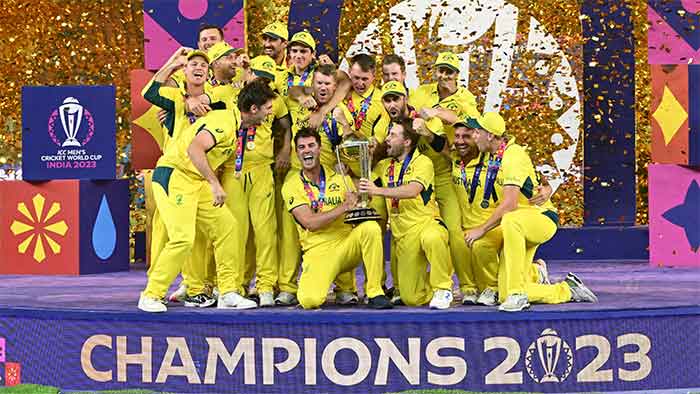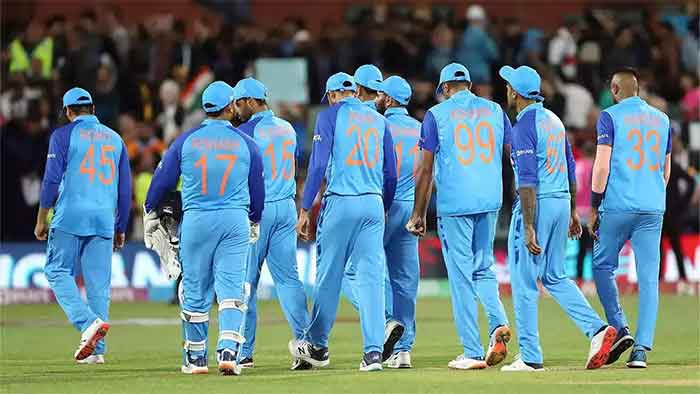
Duncan Stone’s new book Different Class: The Untold Story of English Cricket has important lessons for Indian cricket and sports.
It does not merely challenge the orthodoxy of English cricket, it demonstrates how the values and belief systems at its heart were developed in order to divide, rather than unite, the English at every level of the game.
It was a people’s game but monopolised by the elite for long time and it is now declining in Britain.
.Lots of factories and workplaces, such as London Transport and Vauxhall Motors, had sports grounds. But deindustrialisation and privatisation spelt the end of workplace sport after these valuable, yet unprofitable, assets were either demolished or sold off.
“Add in the loss of more than 10,000 state school playing fields, and it is no wonder that working class participation in cricket continues to plummet,.” Duncan says.
This is what is happening in India. Playgrounds are being privatised for the benefit of the rich and ordinary people are being excluded. This is not only unjust, undemocratic, it is bad for sports, the sporting spirit.
In 1963, the West Indian Marxist C. L. R. James posed a deceptively benign question: ‘What do they know of cricket, who only cricket know?’ A challenge to the public to re-consider the culture and meaning of cricket. Duncan suggests there is still a great deal to learn about the game and its development in England.
This helps to explain a scenario where the top level of the game in this country is dominated by players from a privately educated background. A 2020 study by The Guardian found that 45 percent of first-class cricketers went to fee-paying schools, whereas only seven percent of pupils overall go to independent schools.
This remains the case because the orthodox history of English cricket has been written from an elitist ‘top-down’ perspective. Therefore, in the spirit of E. P. Thompson, Different Class examines the game from the ‘bottom-up’. And, in doing so, it reveals more about the (un)changing nature of English society – and how it works – than any study of the so-called ‘first-class’ (professional) game ever could.
Also , Marqusee’s unflinching analysis exposed English cricket’s institutional hypocrisy, class discrimination, and racial prejudices long before the issues of elitism and racism became points of serious discussion in 2021. Considering this, it is a genuine tragedy that Marqusee and this book were not taken more seriously. Nevertheless, despite the passing decades, Anyone But England still packs a serious punch!
Granted Indian elites in the past may have bought into the ‘gentlemanly’ notions associated with amateurism, but the sport is unambiguously a ‘people’s game’. Sadly, not the case in England / UK where I fear sport is dying as an authentic ‘national game, Duncan says.
And yet, to read the orthodox history of English cricket, you would be forgiven for thinking a small cohort of public-school educated “gentlemen amateurs” generously bestowed the game to the British (English) masses and the empire beyond. This is, however, a long way from the truth.
As Mike Marqusee revealed in his classic, Anyone but England (1994): “… one of the things that makes English cricket English [is] the way it lies about itself to itself. The Englishness is in the lie, in the cult of the honest yeoman and the village green, in the denial of cricket’s origins in commerce, politics, patronage and an urban society.” )
Even if Marqusee failed to provide a detailed account, the process that transformed cricket during the 19th century had little to do with MCC, or the various counties and the County Championship (established in 1890) that the gentlemen amateurs controlled. Instead, cricket’s growth owes everything to ordinary people up and down the British Isles and the countless cups, leagues and associations they established from the late 1850s. Not for nothing was cricket once regarded as the “national game”.
Given the process that allowed cricket to be taken over by the nation’s privately educated elites entailed the rejection of meritocracy, .Cricket’s burgeoning popularity remained a problem for the game’s elites, who had come to believe the game was theirs and theirs alone.
Of these, I think it was Australia and the West Indies – via activists like C.L.R. James, Learie Constantine, Clive Lloyd and Viv Richards – took success over the ‘mother country’ as a means for expressing an independent post-colonial identity most seriously, Duncan says.
Although Test cricket is the zenith of cricket competition, a match lasting five days is a not simply a throwback to the Victorian era, we must recognise matches of this length were an anachronism, ill-suited to an industrialised capitalist society, from their very inception.
In India in the early days in the 19th century, cricket was a people’s game, then the princes tried to control it, then the quadrangular tournament organised on communal, religious lines divided the country, then the middle class gained control of the game and now rank dubious, political elements and capitalists are running it purely as a business with the menace of match fixing and betting.
In A Corner of a Foreign Field, Ramachandra Guha posits that it was because cricket in India was built on the base of communal pride that the sport has achieved its enveloping popularity. The stories of India’s oldest cricket clubs provide an insight not only into how cricket developed in India but into the desires, grouses and insecurities of religious communities at that time.
Berry Sarbadhikary and AFS Taleyarkhan, veteran commentators opposed communal cricket , it must be buried, they declared.The Ranji trophy tournament was a big improvement.
In Mumbai gymkhanas also came to be formed on communal lines,Islam Gymkhana was he first to get land from the British and then others got land.,From a historian or archivist’s point of view, the most disappointing thing about the three gymkhanas is how little documentation they have maintained of their interesting histories.
The P.J. Hindu Gymkhana and Islam Gymkhana have brochures that were created for their centenaries but these contain only basic details; the MCA has no records of the histories of its member clubs either.
Sport is also becoming jingoistic. What makes sport an unwavering ally of nationalism and militarism?
Is sport the new opiate of the masses?
These and many other questions are answered in a new radical history of sport by leading historian of sport and society, Professor Tony Collins.
Tracing the history of modern sport from its origins in the burgeoning capitalist economy of mid-eighteenth century England to the globalised corporate sport of today, the book argues that modern sport is as much a product of capitalism as the factory, the stock exchange and the unemployment line.
Vidyadhar Date is a senior journalist and former cricket lover , now dismayed by the commercialisation of the game.















































